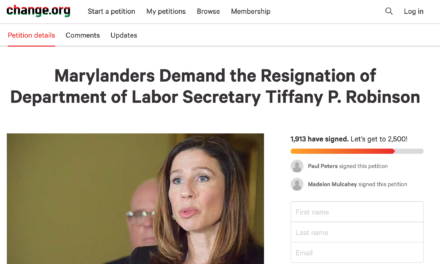 Last week, the Board of Public Works approved a $5 million contract for telephone services at the University of Maryland and the $1.8 million sale of the Towson University TV station the university has been trying to unload for years.
Last week, the Board of Public Works approved a $5 million contract for telephone services at the University of Maryland and the $1.8 million sale of the Towson University TV station the university has been trying to unload for years.
The board made up of the governor, the comptroller and the state treasurer also awarded a $19,000 contract for HVAC system at the Bio-Psychology building in College Park, a $46,000 contract to design an elevator and disability-compliant bathrooms at Towson, and a $169,000 mass spectrometer for drug evaluations at the School of Pharmacy.
From multimillion-dollar building renovations to dorms, catering services and scientific equipment, every month the University System of Maryland comes asking to have contracts large and small approved by top elected officials after a public procurement process that usually involves requests for proposals (RFPs) and multiple bids – an often long and cumbersome process.
There are perhaps aspects of the move of the University of Maryland College Park athletics programs from the Atlantic Coast Conference to the Big Ten that will eventually get this kind of open, public and official scrutiny. But as it stands now, this deal involving tens of millions of dollars – none of it taxpayer funds, we’re told – was conceived, negotiated and executed hastily and in secret until its swift approval by an unelected Board of Regents on Monday.
Some fans and alumni are outraged – two-thirds of people in one of those unscientific reader polls by The Washington Post – but many commentators say it’s a good financial deal for the university. College athletics after all have long been about money, marketing and entertainment, and very little about education.
But no matter how the dollars are segregated, it all takes place on a public campus of a public university, and there was nothing public, open or transparent about the process that approved this move that affects thousands of state employees and students.
It is just another example of how unaccountable public universities have become with their highly compensated presidents, coaches, administrators and staff. Each year, MarylandReporter.com looks at state employees making over $100,000 a year. Last year, there were 5,522 people the state paid six-figure salaries; three-quarters of them are in the university system.
–Len Lazarick






I’ll preface my response by saying that I absolutely no interest in pro,collegiate, or high school sports ! Regarding collegiate & high school sports… I believe that they siphon money from the primary reason for their school’s & college’s existence… turning out well educated graduates, ready to work !
The schools should not be a ” farm system ” for pro sports ! The teams are quite wealthy and could create their own ” farm system “…
As for the money anticipated from the move to the ” Big 10 “… Will any of it be used for improving the ” non – sports ” side of the U of Md. ?
I don’t think so… Don’t they have to pay $ 50 million to the ACC ?
Len mentions in the article that 75 % of State Employees making $ 100,000 + / year are in the university system…
Again, I don’t think so…
This merger is
all about national media coverage for the school and not about what is
best for the public university. At a time when academics are calling
for the downgrading of emphasis on sports as relates to academics on
what are academic campuses, this expansion shows a total disregard to
the path most people in Maryland and across the country want taken on
public university campuses. We have tin ears in our leadership and
need to remember that when we vote. O’Malley appoints these heads and
as such the policy is his.
Let’s
be clear. We are moving from what was once a basketball dominated
sports program with the ACC to what is a football dominated program in
the Big 10. How often do we hear of the dangers of football and head
injuries and how loud are the calls to cut down youth exposure to this
sport? It is loud and growing. So why does a university head go in a
direction that will further endanger students? For media exposure and
money. The amounts given in increase between the two leagues looks to
be a few hundred million and this is going to make Maryland sports
self-sufficient.
It
is clear that the decision has less to do with what is good for the
students or the citizens of Maryland. It is purely part of the efforts
to advertize the state internationally to attract ‘the best of the
best’ to the state. This mirrors the Indy Race that no one wants.
Amen to that! I will be very surprised to see if it actually reaps the expected benefits. Maryland fans are not going to turn out for football games just to see the team be a door mat, and Big Ten fans will only buy single game tickets. The investment in the suites at Byrd was ill advised.